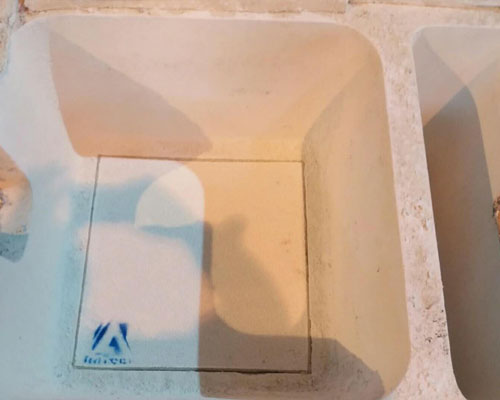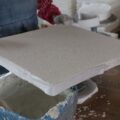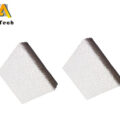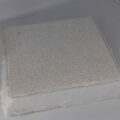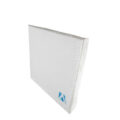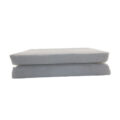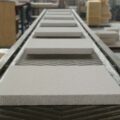Due to the large amount of liquid metal that needs to be filtered when large castings are poured, the effective area of the liquid metal filter required is also large. Such a huge area of the liquid metal filter contributes to the manufacture of the filter, the strength of the filter, and the installation of the filter. There are a series of problems, and the location of the filter in the CFF filter box is limited. The following is the filter placement method for large castings:
1. Multiple large-thickness molten metal filters are laid flat on the runner: the foam ceramic filter is used alone, and the thickness of the filter is thicker, but there is still a risk of the filter being broken.
2. Straight hole and foam composite are placed in the runner: the straight hole filter is placed underneath it is very supportive, but because the hole rate of the straight hole filter is lower than that of the foam, the amount of filtered molten metal will decrease, which may be Obstruct the flow of molten metal.
3. The backing plate and foam composite are placed on the runner: a backing plate with a larger through-hole ratio is placed below, which not only supports the filter, but also does not affect the overall through-hole ratio, which is worth exploring and testing.
4. Small pieces of filter pieces are scattered in the inner runner or cross runner: it reduces the strength impact of the molten metal on the filter pieces, and can have a good filtering effect, but it is limited to large flat castings and other structural castings It is not easy to arrange the pouring system.
5. Use the pre-prepared ceramic core seat, and place the liquid metal filter in the ceramic core seat: The more advanced placement method can be arranged according to the needs of the casting structure, but the ceramic core seat and ceramic tube should be designed in advance.
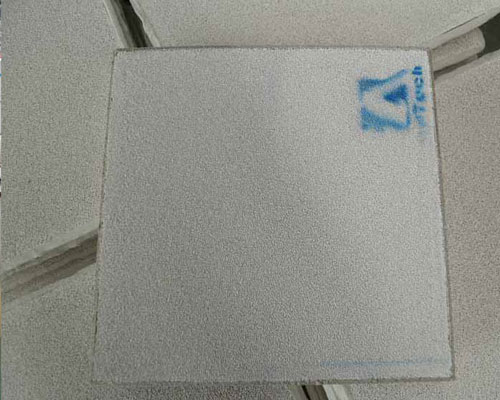
Place the ceramic foam filter on the bottom of the refractory cylinder. Then the cylinder is placed on the gate for pouring, which is called direct pouring. Filters can also be placed in the ladle or the opening of the ladle according to the conditions of the ladle. This type of placement is generally used in aluminum alloy smelting. This placement method simplifies the liquid metal filtering process, and the entire package of liquid metal can be filtered only once.
However, because the filter is soaked in the molten metal for a long time, it puts a strict test on the thermal stability and strength of the filter, and the filter is often broken and cannot achieve the filtering effect. This kind of placement requires very high performance of the filter, so special attention should be paid when using it.

